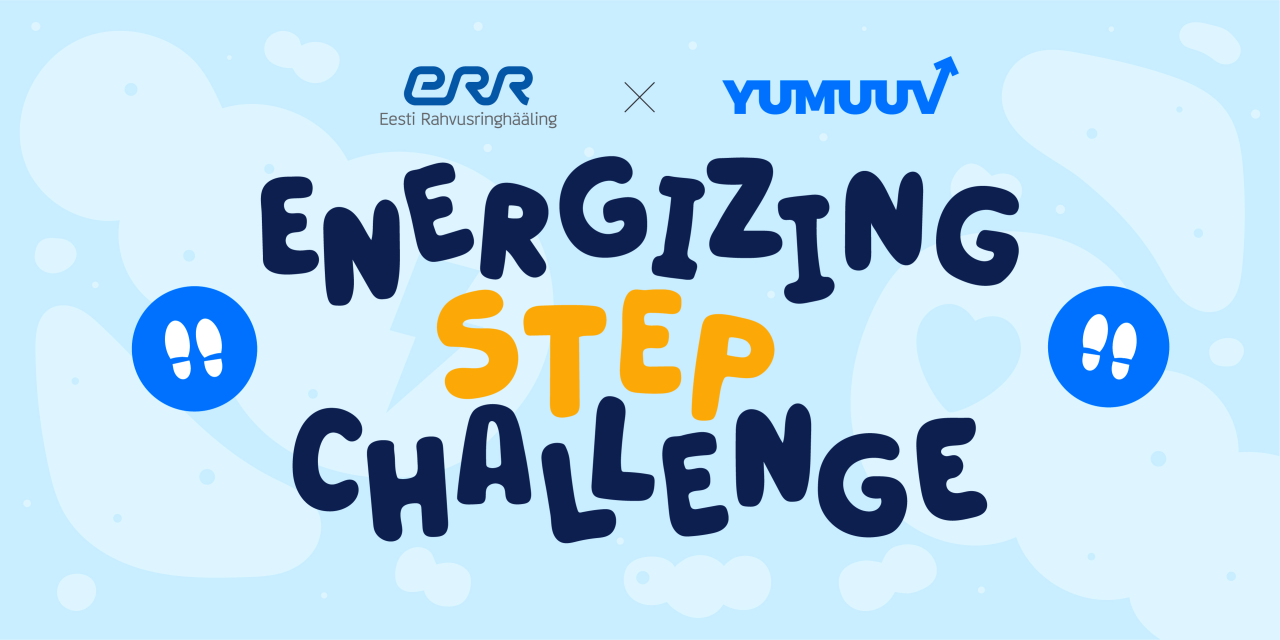
Energizing ERR with the YuMuuv Step Challenge
Introduction
Welcome to the captivating story of how ERR (Eesti Rahvusringhääling), Estonia's renowned public broadcasting organization, embarked on a transformative journey to ignite a wellness revolution among its staff. We'll explore how ERR, with the help of the YuMuuv Employee Step Challenge, kindled a culture of health, vitality, and teamwork.
Table of Contents
Background
ERR, often compared to the BBC but on a smaller scale, boasts a workforce of around 700 employees, complemented by numerous freelancers and contractors. What sets ERR apart is its unique approach to employee health and wellness which is led by leadership from individuals who do not exclusively oversee wellness initiatives within the organization.
Igniting the Spark
Kristel's journey began with her experiences in volunteer organizations, sparking the belief that introducing a wellness challenge could positively transform ERR. The opportunity presented itself when a colleague, Egle, temporarily dedicated herself to health issues during her internship. This narrative underscores the idea that employee wellness doesn't always necessitate an expert but rather a deep-seated passion and dedication.
The Challenge Takes Off
The YuMuuv Step Challenge took flight with a spectacular start, commencing at midnight. It immediately captured attention as one participant achieved an astonishing 20,000 steps by 5 am. This early burst of enthusiasm set an exhilarating tone for the entire challenge. As days passed, more employees enthusiastically joined, and the challenge even garnered the attention of the media, amplifying engagement.
Challenge Duration and Participation
Spanning a month, from September 18th to the middle of the following month, the challenge rallied 98 active participants. This level of engagement exceeded initial expectations, highlighting the readiness of ERR employees to embrace wellness initiatives.
Fostering Friendly Competition
Rather than focusing solely on top performers, the majority of participants found motivation in friendly competition with peers who shared similar fitness levels. Colleagues formed smaller groups, cultivating camaraderie and healthy rivalries among different departments and units. This approach promoted inclusive participation and collaborative teamwork.
Acknowledging Achievements
In recognition of participants' dedication, ERR rewarded high-achieving participants, those who exceeded one million steps, with foot massage gift cards, acknowledging their exceptional dedication to the wellness challenge. An additional 20 smaller prizes were distributed through a draw, further enhancing the sense of accomplishment and inclusivity among participants.
Building Connections
Beyond the physical benefits, the challenge served as a catalyst for building connections within ERR. It facilitated interactions among colleagues who might not typically engage due to their distinct workflows. This newfound sense of community and connectivity added significant value to the wellness initiative.
Addressing Technical Hiccups
The conversation with Kristel, Egle, and Jakob touched upon a few technical challenges during the challenge. Some participants experienced issues with their devices syncing steps, causing temporary dismay. ERR's internal discussions raised the possibility of shortening the time frame for syncing devices, addressing this concern for future challenges.
Privacy Concerns
A unique request emerged during the discussion: some participants expressed interest in an "incognito mode," where they could hide their progress from others. While this idea theoretically has merit, implementing it across the organization could be challenging. Striking a balance between privacy and motivation will be an ongoing consideration.
Expanding Challenge Options
The idea of diversifying the challenge also surfaced, with participants suggesting a cycling challenge in addition to the Step Challenge. This reflects the evolving preferences and lifestyles of participants and highlights the importance of accommodating different forms of physical activity to keep employees engaged.
Device Discrepancies
The conversation acknowledged the variability in devices used by participants, from smartphones to smartwatches. While this can affect data consistency, it highlights the trend toward a more health-conscious workforce with a growing interest in wearable health technology.
Motivating New Parents
The challenge resonated with employees who recently became parents, providing a convenient way to stay active while caring for their infants. Stroller walks became a part of the challenge, demonstrating its adaptability to various life stages.
The Power of Behavior Change
Ultimately, the YuMuuv Step Challenge successfully motivated employees to prioritize their physical health, fostering positive behavior change. Many participants expressed their intentions to continue these healthier habits independently, demonstrating the long-lasting impact of the challenge.
Recommendations for Similar Organizations
Kristel enthusiastically recommends that other organizations, similar to ERR, consider implementing wellness challenges. Such initiatives can promote health and engagement among employees. ERR's experience serves as a testament to the positive outcomes achievable when a commitment to well-being is prioritized.
Conclusion
The YuMuuv Step Challenge at ERR (Eesti Rahvusringhääling) has set an inspiring example, propelling employee health and wellness into the spotlight. This initiative showcased that wellness transformations can thrive even without a dedicated wellness professional, as long as there is unwavering passion and commitment. The pillars of its success were friendly competition, inclusivity, and the celebration of individual achievements.
